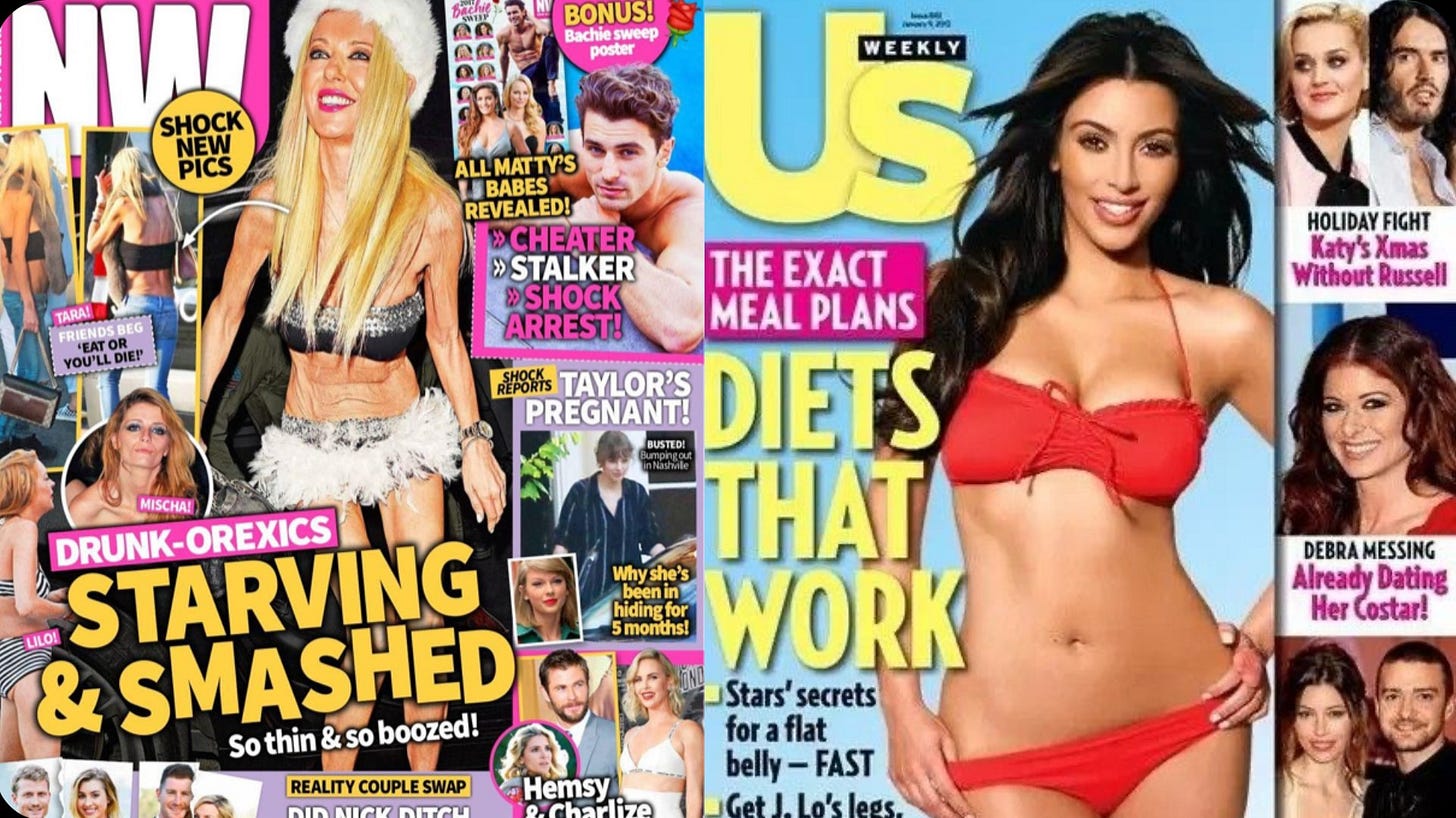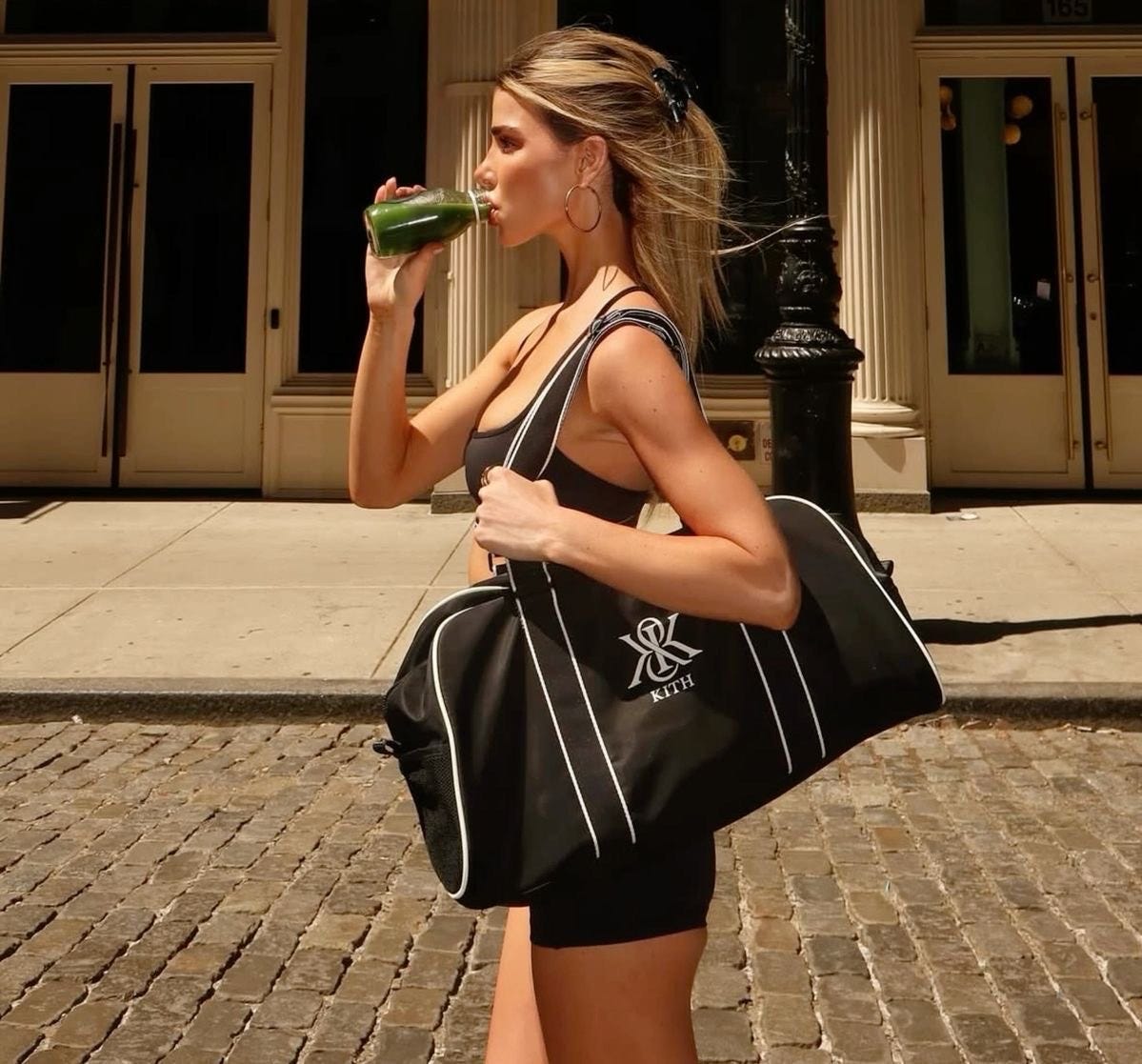TikTok banned the word "skinnytok”, but that didn’t stop the rise of skinny.
There is an entirely different side of TikTok out there, filled with advice on diet, workouts, and daily habits that can help you achieve a thin body or get “skinny.” In these videos, there is an excessive romanticisation of the skinny body, mostly done by petite, white women in their late 20s.
These videos make you believe that your most significant goal in life should be to get skinnier, no matter where you start. And god forbid, if you have any real goals apart from this, you’re a terrible person. You’re lazy and pathetic. You can always be skinnier and “prettier.” And if you don’t like what I’m saying, you hate yourself because you don’t wish to be your best self.
And that, ladies, is skinnytok for you.
If you search for this word on TikTok today, you will not find any results, because TikTok has banned it. The rise in “thinfluencers”, as they call themselves, was so evident that even TikTok had to step in. The reason for the ban was SkinnyTok’s association and promotion with unhealthy weight loss content, and exacerbating disordered behaviours. And that is when it hit me: the thin girl is trending again. I’m exhausted.
This isn’t a recent trend that has swept the internet by storm, but a phenomenon that has been on the rise for quite a while now. A series of events led us to an eventual return of skinnytok.
Think about all the trends circulating on TikTok within the last couple of years. Whether it’s the clean girl aesthetic or the return of low-rise jeans, a lot of these trends hinted towards the return of the skinny body before it was even a part of the discourse. Even though most of these trends started off with the brand of inclusivity, they eventually went on to introduce the same body type that was endorsed by Tumblr in 2013. Because while the internet said it welcomed all body types, a micro-mini skirt was only ever accepted on a size XS frame.
But this change no longer remained exclusive to the media. Enter Ozempic: A drug normally consumed by diabetic patients, now used by celebrities and influencers to accelerate their weight loss. It did not come off as a cosmetic tool used to enhance your features, but it signified how far people could go to fit into this ideal body. And every passing day, it got worse.
Skinny was slowly soft-launched into our lives through various trends on social media or trends in the entertainment industry. Once again, we were made to believe that you’re only beautiful if you fit into a certain body type, and once again, the internet proved that none of the influencers can ever be body positive.
The same ideal is getting reintroduced to us. The only difference is the medium through which it has been reintroduced. For the 2000s, it was the magazines, newspapers, and tabloids introducing us to a lean body by subtly shading on the celebrities who did not fit into the mould. Then, in 2014, Tumblr reintroduced it to us, and after 10-14 years, this trend resurfaced through a different platform, but with the same format. Today, it’s the “thinfluencers” and their cult-like following who are responsible for the gradual re-emergence of skinnytok.
Liv Schmidt and the Skinny Societe
Of course, how can we discuss skinnytok without talking about Liv Schmidt?
Recently, the cut released an article on Liv Schmidt and her subscription-based group chat “the skinny societe”, where the influencer gives her tips and tricks to stay skinny or achieve a skinny body. The article made bold claims about this group chat, stating that it is a toxic community of women who encourage you to achieve an unhealthy level of skinny, until you lose your hair and skip your period. Here is an excerpt, taken from the cut’s Instagram account:
“Emma told me that people often talked about their periods becoming irregular or experiencing hair loss, two common side effects of disordered eating. “None of the members in the group said ‘Maybe you should chill out,’ she said. They just recommended hair vitamins to each other.”
Even though I’ve never been a part of her group chat, I found this article quite believable. I’ve watched a number of her videos available on her YouTube channel, and some of the tips that she gives did not sit well with me. The one I was the most bothered by was a video titled “How to stay skinny on vacation.” The advice? Wake up early, work out every day, and don’t have too many drinks. It’s a vacation? used to relax? And unwind? That’s the trick. The new aesthetic of wellness lets women starve politely.
Of course, all of these tips will work if you want to lose weight. For instance, getting 10k steps and portion control are two of her key tips to get a skinny body.
Walk more, Eat less? Groundbreaking. But that’s what makes it dangerous, that it’s reasonable. You don’t notice when discipline turns to obsession, when 10k steps become 20k, when portion control becomes disordered eating. And suddenly, you’re back into the spiral.
Skinny = Healthy?
Now, don’t get me wrong, I am not against working on your health and staying in your best shape. By every passing day, more and more people are exploring the subjects of health and nutrition. With the rising cases of obesity, it is emerging as the need of the hour. And it’s essential.
My problem is with these thinfluencers who make us believe that health can only exist in a single body type. A person can be at their skinniest and may not possess a healthy lifestyle. Every time skinny goes viral, these influencers hide under the pretense of labelling it as a promotion of a healthy lifestyle, and we conveniently forget that heroin chic even existed. Should it even be called healthy if people are encouraged to smoke a cigarette and have caffeine to “curb their hunger”?
Today, Skinny has been made synonymous with healthy. These influencers are selling you a skinny lifestyle disguised under the pretext of calling it healthy. But in reality, these are all almond daughters who never healed and still struggle with body image issues. And babe, having a coffee for dinner is not a “girl dinner.” Respectfully, seek help.
Honestly, it’s sad. It’s sad that we have so many meals to try, places to travel to, movies to watch, and things to achieve, yet we are forced to obsess over our bodies. We are made to believe that if we don’t fit into a certain mold, all of our achievements are worthless. Teenage girls are told that having a skinny body is better than having a healthy body. Or even worse, they are made to believe that a skinny body is a healthy body. More than rage, I just feel sympathy for influencers like Schmidt, whose entire content revolves around their desire to get skinny and preach to others on the same topics. All of us have so much of our lives ahead of us, yet we are made to centre our identity around our bodies. Their worth is judged by their “skinniness.” Their bodies are always open to critique. But honestly, who is to blame?
Of course, history repeats itself. And it is repeating yet again. Skinny is coming back. So let’s not make it trending again. Let’s reject every idea that throws us back into the spiral of toxic beauty standards. Let’s stop every trend and every person who tells us that skinny is the only standard. We’ve been through this before; we don’t need it again. This time, I’m not buying it.
“Nothing tastes as good as skinny feels”?
Try buttered popcorn in bed with a rom-com. A mango in June with juice down your chin. A life where I don’t count almonds or fear bread baskets.
Trust me, it does.
Thanks for reading! Currently, none of my work is behind a paywall and everything is available free of cost. However, If you like my work and wish to support me, you can do it by clicking on the button below:)
See you next week<3
⋆ ˚。⋆୨♡୧⋆ ˚。⋆







